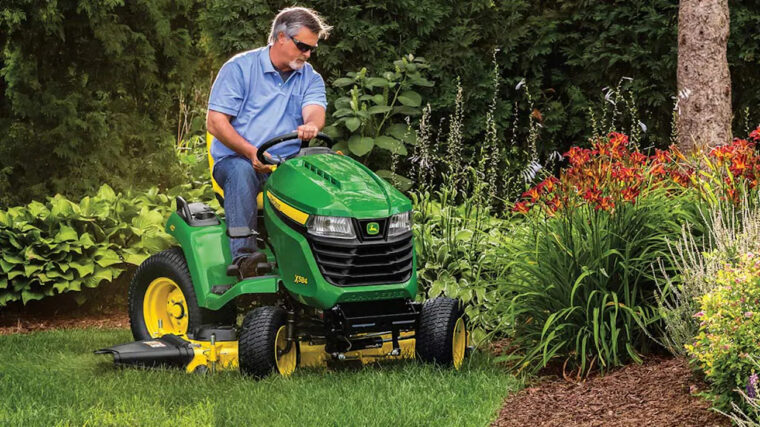Well before spring rolls around, you need to take the time to prepare for the planting season ahead. John Deere has a wide array of lawn and grounds equipment to help you achieve a wide array of tasks, whether you’re focused on flowers, fruits, or vegetables. Using the right tools can help you transform your spring from an average planting season to one that goes above and beyond your gardening dreams.
Why is it Important to Prepare Your Garden Before Planting?
After a long winter, it’s critical to take the time to tend to your grounds before you do any planting. This is especially the case if did little or no maintenance during the winter. While it’s true that many plants will grow in sub-par conditions, it’s best to optimize your soil to give them the best chance to thrive.
To begin, look into the specific soil requirements for the type of plants you are working with this season. While some may do well in sandy soil, others may need an ample amount of water. It’s important to consider this factor before you put anything into the ground.
Next, you may want to utilize organic material and fertilizer to correct nutrient deficiencies in your soil. Plants use many macronutrients found in fertilizer, including nitrogen, phosphorus, and potassium.
Finally, take the time to eliminate nearby weeds in your soil before planting. You may also want to consider using a non-selective herbicide to get rid of any weeds that sprout up during the growing season.
9 Steps to Prepare Your Garden for Spring
Once temperatures warm and it’s time to begin planting, there are a few actions you can take to prepare your garden for the months ahead. Here are nine steps to consider as you look to start planting, whether you’re working with flowers, fruits, or vegetables.
1. Visualize Your Plans for Summer-Flowering Plants
Many summer-flowering plants need a head start in the spring. Keep this in mind as you plan out what you want to bloom in the coming months as the weather grows warmer.
2. Clean Your Equipment, Tools, and Shed
Cleaning your equipment and tools is essential to preventing the spread of fungi and diseases that may impact your plants. It’s also important to remove any rust from your shovels, trowels, and hoes before you begin working with these tools.
3. Clear Out Mulch, Weeds, and Debris
If you have not been maintaining your garden area during the winter, there is a good chance that you need to spend a little time clearing out mulch, weeds, and other debris before planting. Doing so will give your new plants the best chance of thriving in the area where you place them at the beginning of the season.
4. Prune Your Garden
Pruning is essential to helping your plants thrive all season long. If you have existing plants in your garden that have weathered the long winter, take the time to prune them to encourage new growth. Pruning new plants as soon as they go into the ground can also prompt them to grow and thrive in your garden.
5. Prepare the Soil
After the last frost, you can begin preparing your soil for planting. Begin by tilling it to loosen it up, giving your spring plants an opportunity to expand once they’re in the ground. Once this has been done, you can consider adding compost to provide some essential nutrients. A soil test can help you identify the types of nutrients that need to be added before you begin planting.
6. Set Up a Compost System
Consider dedicating an area to a compost system where you can develop your own stock over time. A mixture of grass clippings, vegetable peelings, paper, and woody prunings can give you a nutritious compost that your plants will love and thrive on throughout the season.
7. Identify and Source Your Seeds
You may want to connect with a local seed grower to gather the seeds you need for your garden. Seeds from a local grower are more likely to have adapted to your region’s particular climate, giving them the best chance to thrive. When selecting seeds, don’t forget to consider the amount of sunlight your garden receives each day.
8. Set Up New Planters and Garden Beds
Before you begin sowing your seeds, you’ll want to have all of the planters and garden beds you need in place. Spring is an ideal time to begin building any garden beds you need. This is also the time to install shepherd’s hooks and window boxes where you want them situated throughout the growing season.
9. Remove Garden Pests
You may have more pests in your garden than you think before you even begin planting. Take a closer look at your perennial plants to eliminate any slugs, snails, and aphids that may be hibernating. Eliminate any remaining summer bedding from your planters as well to get rid of any larvae that might remain.
How John Deere Lawn & Garden Tractors Simplify Spring Cleaning
With a lawn and garden tractor from John Deere, you can simplify garden preparation and make it easy to maintain your yard throughout the planting season. These pieces of equipment come with a wide array of attachments as well, providing extensive versatility. With effortless steering and intuitive controls, operating a lawn and garden tractor from John Deere is a breeze. At the end of the day, you’ll be glad you made the investment and look forward to tending to your garden.
Interested in prepping your garden for the spring? Contact your local John Deere Dealer to explore the various lawn & garden tractors that will help ease your spring cleaning efforts!
If you enjoyed this post or want to read others, feel free to connect with us on Facebook, Pinterest, Twitter, or Instagram!
